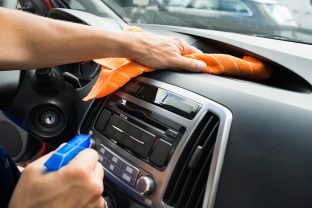How do you remove mist from your windscreen?

Why does fogging occur?
Fogging occurs when warm air comes into contact with cold air. This phenomenon often occurs in winter, when cold air from outside meets warm air inside the car. But it can also happen in the summer when, contrastingly, the air-conditioned atmosphere inside the vehicle comes into contact with the heat from outside. So the problem of fogging is a year-round one!
What should you do?
Did you just start the engine, and now the windscreen is fogging up? This is such a regular occurrence that car manufacturers have taken it into account. They have integrated a defogging function that can activate at the touch of a button. For greater efficiency, turn the air conditioning on to the maximum, setting it to cold air.
When driving, remember to recirculate the outside air rather than inside. To reduce the contrast between the interior and exterior, you can also leave one of your windows ajar. While it is annoying to have to demist your car when you start up, having a fogged-up windscreen while driving could be hazardous.
What should you not do?
Let the ventilation system do its job and never try to wipe off the fog with your hand or a cloth, as this will leave traces that will impair your visibility.
To prevent the windscreen and windows from fogging up, do not place wet objects in the vehicle. For example, get out of the habit of storing wet umbrellas. If it has rained during the day, remove carpets from the car when you get home and let them dry overnight. Also, never leave the windows open in wet weather when the vehicle is stationary, preventing the seats from getting wet. Don’t neglect necessary repairs. Cracked windows, damaged seals and poorly closing boots are all openings through which moisture can seep in and, over time, cause the windscreen and windows to fog up.
How can you avoid fogging?
There are some good habits you can adopt to prevent or at least limit fogging. To begin with, keep your windscreen spotlessly clean. This helps because it is more difficult for steam molecules to cling to a smooth, dirt-free surface than dirty glass. Complete the cleaning with clear water and white vinegar by polishing the windscreen with a chamois. Then, to prevent moisture from stagnating inside the car, which can cause droplets to form as soon as the engine starts, fit your vehicle with a moisture absorber. And if the humidity persists, ask a professional to check the windows for leaks and the condition of the filters. Sometimes a new seal or a new pollen filter is all that’s needed to solve a persistent moisture problem in a car!
The principle is simple: the more you take care of your car by cleaning it regularly and replacing worn parts, the less you will see fogging!














